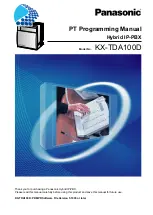
76
7
Tips and Tricks
7.6
Adjusting Firing Rate Individually
Adjusting firing rate ratings individually when firing rate points are to be adjusted without pro-
gramming a complete curve.
When adjusting individual points it is normally only possible to freely adjust the setpoint val-
ues. This is done by running to the firing rate value (figure appears after the value). The asso-
ciated setpoint can be adjusted. The figure, which shows that the change is admissible,
appears not only right at the programmed firing rate point but also in the range ± 3 points
around this. When stored, however, the value actually displayed is adopted.
At each adjustment of individual points it is therefore possible to shift the firing rate value by
up to 6 points.
Procedure for shifting the firing rate value:
Undertake operations as described under "Adjusting individual points” but shift the firing rate
rating as required
Set setpoint value
Store
If the desired firing rate rating cannot be achieved in one operation:
Repeat procedure
Output point is now the last curve entered
7.7
Entering an Initial Curve
Since, prior to initial programming, the setpoint EEPROM contains a standard curve that very
probably doe not correspond to the actual conditions of the system (ranges, setpoint values),
the following procedure is recommended for the initial curve:
Make sure that the signal wiring is correct
–
see chapter
ExternalLink: Funktionstest
and manual
Clear memory
Leave VMS at "Setting”
Have system started up without control release (terminal 4)
After pre-purge, enter ignition firing rate point
Ignition
Give control release (terminal 4)
Enter further points with burner running
Store
7.8
Approaching Control Elements From One Side
If there is an overshoot, the fuel/air ratio control would drive to the actuator from one side dur-
ing the operation, to compensate for the mechanical hysteresis of the valves.
All the setpoints would be driven from above.
Exception:
The highest point is never overrun and therefore driven from below.
When it comes to setting, it is to be ensured that the valves are driven in the same way. As a
result the system values are reproduced in exactly the same way in automatic mode .
Summary of Contents for VMS Series
Page 2: ......
Page 119: ...118 10 Appendix...
Page 129: ...128 10 Appendix Fig 10 9 Ger t 4 Ger t 5 with output regulator...
Page 141: ...140 10 Appendix 10 14 Declaration of Conformity...
Page 142: ...141 10 Appendix...
Page 143: ...142 10 Appendix 10 15 Protocol Example...
Page 144: ...143 10 Appendix 10 16 O2 Setpoint Curves...
Page 145: ...144 10 Appendix...
















































